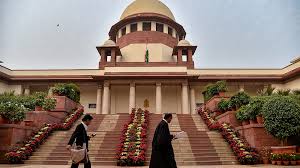GS3 – Science & Technology

Context
In a landmark ruling, the Supreme Court acquitted a death row inmate accused in a 2011 double murder and rape case, citing serious flaws in the investigative process and the mishandling of DNA evidence. This judgment not only rectified a miscarriage of justice but also reaffirmed the constitutional principle of presumption of innocence and called for stringent scientific standards in managing forensic evidence.
Key Directives Issued by the Supreme Court
To prevent future lapses in the collection and handling of DNA evidence, the apex court issued nationwide binding directives, including:
- Standardised Protocol for DNA Collection
- DNA samples must be meticulously packed and clearly labelled with the FIR number, case particulars, and details of the responsible officers.
- Signatures must be obtained from the medical officer, investigating officer, and, where available, independent witnesses.
- If witnesses are unavailable, the reason must be clearly documented.
- Timely and Secure Transportation
- DNA samples are to be delivered to forensic laboratories within 48 hours of collection.
- Any delay must be explained in the case diary.
- Preservation methods must be appropriate to the biological nature of the sample.
- Documentation and Chain of Custody
- DNA evidence packages cannot be opened or resealed without approval from the Trial Court, which must be based on expert medical opinion.
- A Chain of Custody Register must be maintained, recording every movement of the sample, with countersigned entries and annexed to court records.
- Institutional Reform Measures
- Directors General of Police (DGPs) must implement standardised formats for forensic documentation.
- State Police Academies are required to include dedicated forensic science modules in their training programs for investigating officers.
- The Supreme Court Registry will circulate the judgment to all High Courts and State Police Chiefs for immediate implementation.
Major Concerns Raised by the Court
- Compromised DNA Samples: Due to delays, improper packaging, and lack of a secure custody chain.
- Post-Mortem Deficiencies: Autopsies were conducted at the crime scene without adhering to standard medical protocols, increasing the risk of contamination.
- Lack of Standard Practices: Absence of uniform procedures in the collection of forensic evidence severely undermined the trial’s credibility.
- Investigative Shortcomings: Flawed investigation, failure to include independent witnesses, and disregard for due process procedures.
Way Forward
- Legal Framework: The Court highlighted the absence of a dedicated law to address wrongful prosecution and compensation, urging Parliament to consider legislative reforms.
- Capacity Building: Forensic infrastructure and police training must be enhanced in accordance with the Court’s expectations.
- Judicial Oversight: Lower courts must strictly enforce the newly mandated protocols to prevent procedural violations and miscarriages of justice.




